Support Village Voice News With a Donation of Your Choice.
By Mark DaCosta- This article is about addiction to harmful behaviours, not to drugs. In parts I and II of this series it was established that addiction is a big problem in Guyana. It was noted that experts say that one may become addicted to a substance such as alcohol, cocaine, or nicotine – Guyanese call this drug addiction. Most experts agree, though, that a victim may become addicted to a behavior such as gambling, sex, gaming, or eating.
It should be noted here, that the definitive literature on psychiatric disorders recognises only gambling as a definite behavioural addiction. The literature, though, strongly recommends studies of other behaviours – also known as process addictions.
In August 2011 – for the first time ever – the American Society of Addiction Medicine (ASAM) issued a public statement defining all addiction in terms of brain changes. “Addiction is a primary, chronic disease of brain reward, motivation, memory and related circuitry,” the statement said.
The following excerpts are taken from the ASAM’s statement on the subject:
“The new ASAM definition [of addiction] makes a departure from equating addiction with just substance dependence by describing how addiction is also related to behaviors that are rewarding. This is the first time that ASAM has taken an official position that addiction is not solely “substance dependence.” This definition says that addiction is about functioning and brain circuitry and how the structure and function of the brains of persons with addiction differ from the structure and function of the brains of persons who do not have addiction. It talks about reward circuitry in the brain and related circuitry, but the emphasis is not on the external rewards that act on the reward system. Food and sexual behaviors, and gambling behaviors, can be associated with the “pathological pursuit of rewards” described in this new definition of addiction.
“We all have the brain reward circuitry that makes food and sex rewarding. In fact, this is a survival mechanism. In a healthy brain, these rewards have feedback mechanisms for satiety or ‘enough.’ In someone with addiction, the circuitry becomes dysfunctional such that the message to the individual becomes ‘more’, which leads to the pathological pursuit of rewards and/or relief through the use of substances and behaviors. So, anyone who has addiction is vulnerable to food and sex addiction.”
In other words, the ASAM defines addiction in terms of physical processes in the brain.
The position taken by the ASAM supports the solid and convincing reasons why many scientists believe that substance abuse disorders (addictions), and process or behavioural addictions are very much related.
In both cases, the addict usually knows that the action will cause long term harm, but the person will do it anyway because the action causes an immediate good feeling.
Also, in both substance and behavioral addictions, there are particular, identical chemical and physical processes in the brain that can be directly observed with medical diagnostic equipment. As such, even though the medical community is still studying the matter, it is generally believed that, eventually, all addictions may be found to have similar origins. And those origins are likely to be combinations of inherited and environmental influences.
As is the case with substance use, addiction is usually recognised whenever the particular behavior begins to disrupt the normal, happy life of a victim. That is, when the behavior becomes problematic.
In part IV of this series, the problem of behavioral or process addiction will be further examined, and possible solutions will be touched upon.
Meanwhile, Guyanese who have questions about this issue, or problems with addiction may contact a health care professional or the Guyana suicide hotline on (592) 600-7896.

















